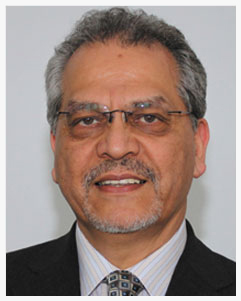From karmabhoomi with love and gratitude
The wise tell us that we must remember where we came from and where we have been in order for us to reach where we want to be. As I was preparing to go to San Francisco to attend the 27 th annual Association of Nepalis in Americas Convention 2009, where I was to talk about the Non-resident Nepali Association (NRNA), I found myself reflecting on how NRNA and its mission grew out of the deep-seated need and desire of non-resident Nepalis (NRNs) worldwide to have a vehicle for staying connected and for doing something for their maatribhoomi (or janmabhoomi; place where one was born) from their karmabhoomi (place where one lives to earn a living). NRNAΓÇÖs mission, accordingly, reflects our need to operate in both these spheres. I recalled restating in a recent interview to a journalist that NRNAΓÇÖs achievements in the six short years since its founding have been phenomenal but that there still remain many important things for NRNA to accomplish on behalf of all NRNs and for the benefit of Nepal and Nepalis.
Envisioning and conceptualizing NRNA was challenging as well as exciting, but actually founding NRNA proved to be a much more daunting and demanding task beset with obstacles. Fostering NRNA into a living, functioning and effective organization and keeping it on track have been even more challenging — although, at this point, in the rear-view mirror of time, as it were, the struggle for NRNA and, in turn, NRNAΓÇÖs struggle on behalf of NRNs worldwide can seem less than they really were.
NRNA was born at a time when Nepal was in the grip of turmoil and armed conflict. When a group of us from around the world, under the leadership and coordination of the current and founding President Dr Upendra Mahato, began discussing the formation of NRNA and preliminary plans for organizing the First Global NRN Conference in 2003 in Nepal, which would serve as the launch pad for NRNA, we received mixed reactions and questions about our timing and venue for the event in view of the state of conflict and unpredictability in Nepal. The need for an NRN organization and the desirability of a conference, however, were never questioned. We faced a tough decision situation: when was the country returning to normal, could we wait for some elusive ΓÇ£auspicious momentΓÇ¥ in the future, and why not now?
One of our colleagues in the United States rescued us — unintentionally and unknowingly on his part — from our decision dilemma: he told us firmly, I recall vividly, that he would participate in the conference and support the launching of NRNA only, and only, on condition that his personal safety in Nepal was absolutely guaranteed. This seemingly rational, albeit selfish, stand provoked a simultaneous, rather strong reaction among several of us: If 23-million Nepalis are living and working in Nepal under the current conditions, how can we, as Nepalis, even think of asking for guaranteed safety to visit our own motherland? and so forth. This pushed us to the decision point: the conference would be organized and NRNA launched. The rest is history, as they say. To be sure, the situation in Nepal was extremely tense and volatile, and security, a major concern. Yet the conference was a big success and NRNA was officially launched (http://www.nrn.org.np).



